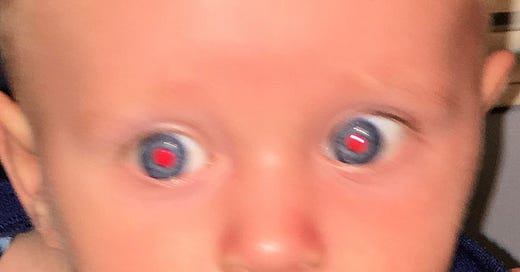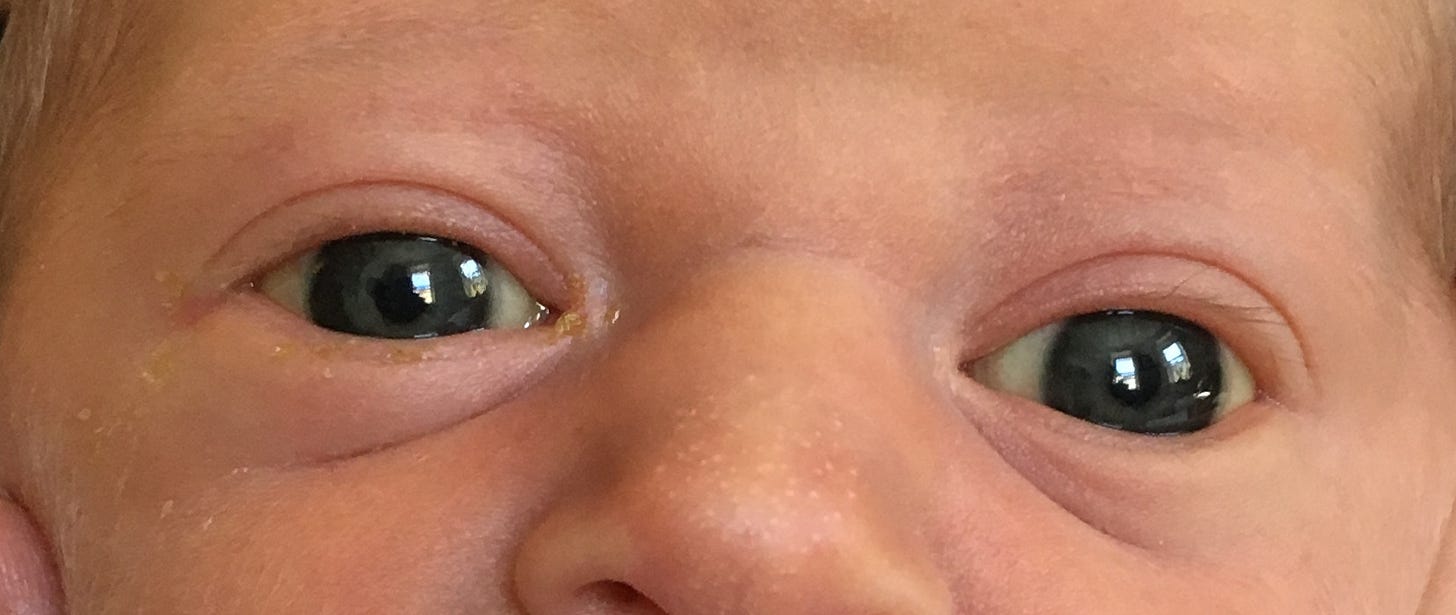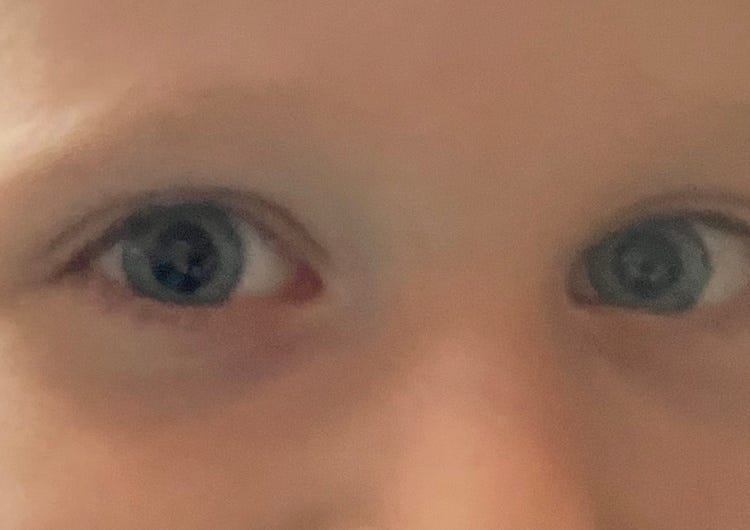This post continues with more common eye issues.
1. A mother asks, “When will my baby’s eyes be their final color?
The answer is by the end of the first year.
While some baby’s eyes are blue or gray at birth, many are brown from the start.
Eye color is determined by melanocytes, cells that secrete the protein melanin. Melanin is also involved in skin, hair, and eye color. The iris contains melanocytes, and these cells respond to light by increasing melanin production, usually over the first year of life.
Depending on how much melanin is secreted, your baby's eye color may slowly begin to change after birth. If your baby has blue eyes, the melanocytes are secreting only a little melanin. If they secrete just a little bit more, your baby's eyes will look green or hazel. If your baby has brown eyes, the melanocytes are secreting a lot of melanin.
The pictures below are of the same child: at birth, 6 months, and 4 years. Eye color is determined by the color of the iris, the muscular, circular structure surrounding the pupil. (The picture around birth also shows some yellowing of the sclera due to the bilirubin pigment. This is a common finding in newborns in the first days of life.)
Birth
6 months
4 years






